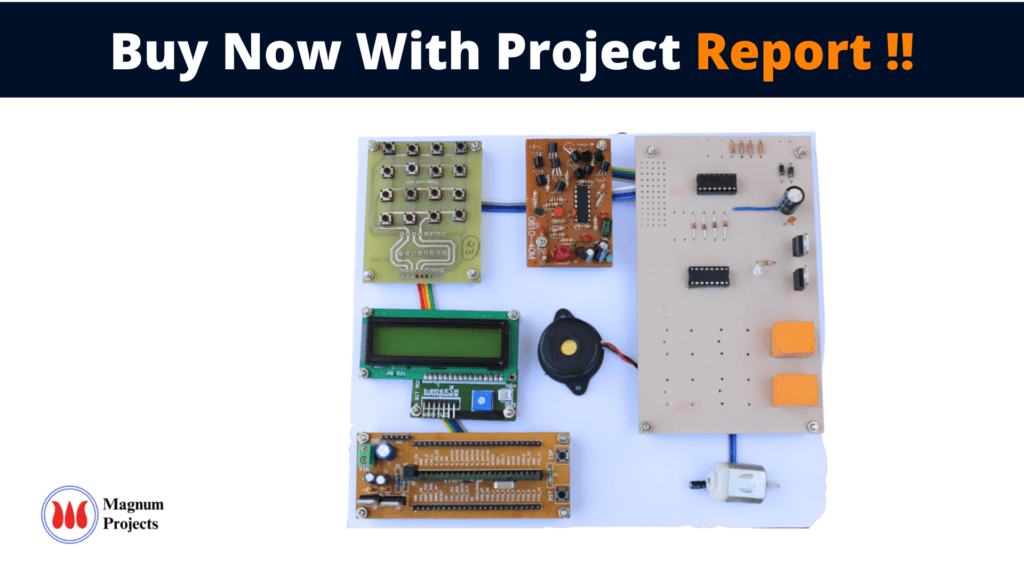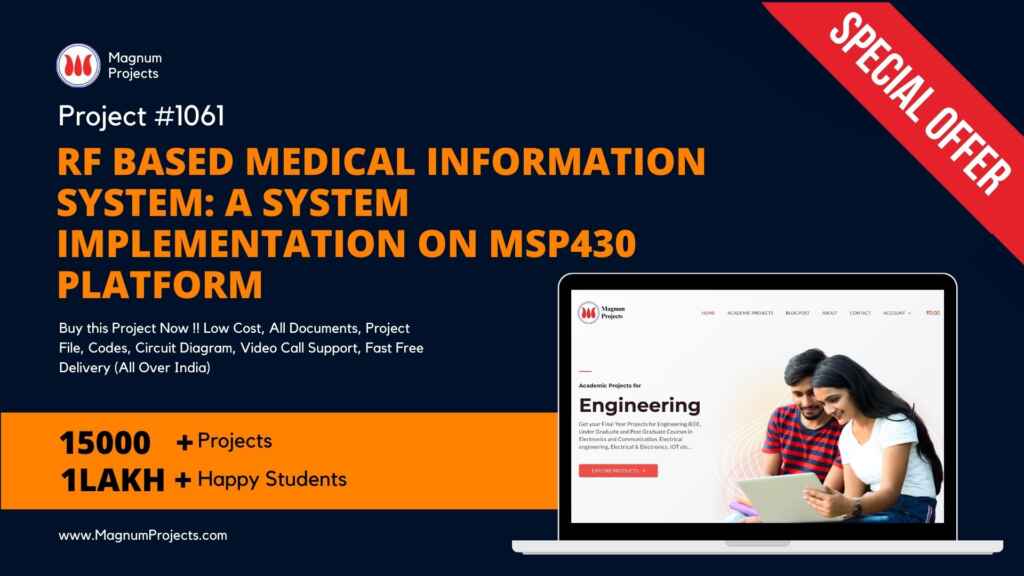Table of Contents
Introduction:


Radiofrequency identification (RFID) technology is having a major impact on the healthcare industry. By attaching radio frequency tags to different entities (people and objects), RFID technology can provide identification, tracking, location, security, and other capabilities. The goal of this project is to show how RFID technology can be used to reduce medical mistakes, improve patient safety and enhance the quality of medical service in hospitals. After briefly introducing the health domain and some of the healthcare issues, this chapter describes how RFID technology can be used in healthcare. Thus the third section describes some hospital use cases that could benefit from RFID technology. Also, it briefly presents some of the existing projects that successfully implement this emerging technology in healthcare.


Block diagram explanation :
Power supply unit:
This section needs two voltages viz., +12 V & +5 V, as working voltages. Hence specially designed power supply is constructed to get regulated power supplies.
Buffers:
Buffers do not affect the logical state of a digital signal (i.e. a logic 1 input results in a logic 1 output whereas logic 0 input results in a logic 0 output). Buffers are normally used to provide extra current drive at the output but can also be used to regularize the logic present at an interface.
Drivers:
This section is used to drive the relay where the output is the complement of input which is applied to the drive but the current will be amplified.
Relays:
It is an electromagnetic device that is used to drive the load connected across the relay and the o/p of the relay can be connected to the controller or load for further processing.
MSP 430 Controllers:
The MSP430 is a mixed-signal microcontroller family from Texas Instruments. Built around a 16-bit CPU, the MSP430 is designed for low-cost and, specifically, low-power consumption embedded applications.
RF transmitter:
This is a 2-channel Radio Frequency Transmitter specially tuned with its RF Receiver part in carrier frequency. Each zone is set with one channel and transmits its presence to the moving vehicle’s RF Receiver unit.
RF receiver:
This is also a 2-channel RF Receiver specially tuned with its counterpart RF Transmitter in carrier frequency. When a vehicle enters any zone that zones RF signals are received by this unit. Thus depending upon the channel signals it receives from the transmitting end the channel output of the RF Receiver goes HIGH. This HIGH signal is fed to the ARM7 chip through Buffer & Driver and Switching stage for further processing.
Voice Chip :
The aPR33A series are powerful audio processors along with high-performance audio analog-to-digital converters (ADCs) and digital-to-analog converters (DACs). The aPR33A series is a fully integrated solution offering high performance and unparalleled integration with analog input, digital processing, and analog output functionality. High-quality audio/voice systems with lower bill-of-material costs can be implemented with the aPR33A series because of its integrated analog data converters and a full suite of quality-enhancing features such as sample-rate converters.
In this messages must be recorded or played back sequentially, specially designed for simple key triggers, the user can record and playback the message. Meanwhile, this mode provides a power-management system.
Methodology:
This system presents that RFID tags will be used for both patients and medicine houses. Medicine 1 Tx is RFID for patient 1 and Medicine 2 Tx is RFID for patient 2. Any patient came to the hospital for medicine in the medicine house checks the RFID tags for respective patients. Then the patient should enter the password that is input to the MSP430, in the controller it checks the password if the patient is authorized then it processes next. The MSP430 will generate the output that is fed to buffer IC 4050, buffer stores and given to the driver IC 2003 in driver current will amplify and voltage will invert with the help of Darlington circuit of driver IC to drive the relay. Then the signal is given to the output load, which is a voice announcement regarding patient medicines.
Advantages:
- Reducing the operating costs, and reducing costly thefts.
- RFID systems are becoming popular in logistics operations, inventory and materials management, and industrial automation, replacing optical identification technologies such as barcodes.
- Managing assets such as hospital equipment.
- Providing Data for electronic medical records systems
Disadvantages:
Patient identification errors may lead to improper dosage of medication to patients, as well as having invasive procedures done.
Applications:
- Military applications.
- Drug Identification & Medication Management.
- Specimen Collection and Blood Infusion Safety.
- Patient Identification.
- Surgical Instrument Identification & Sterilization.




